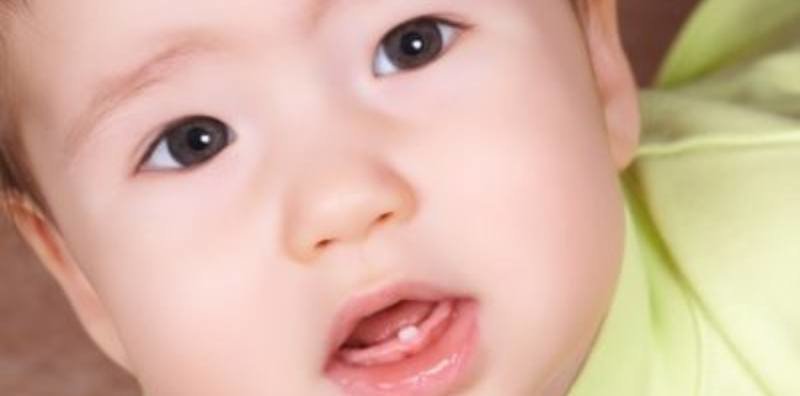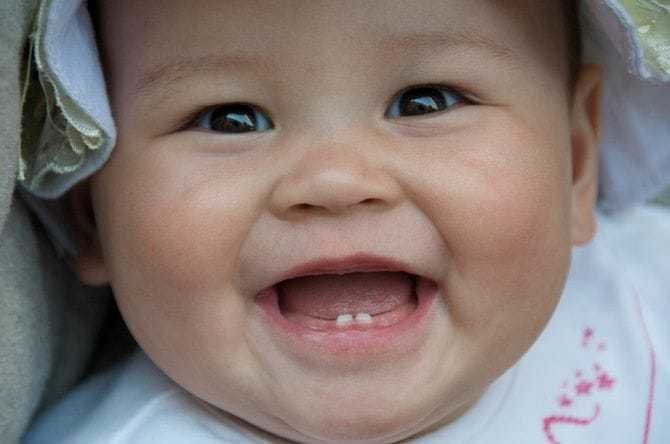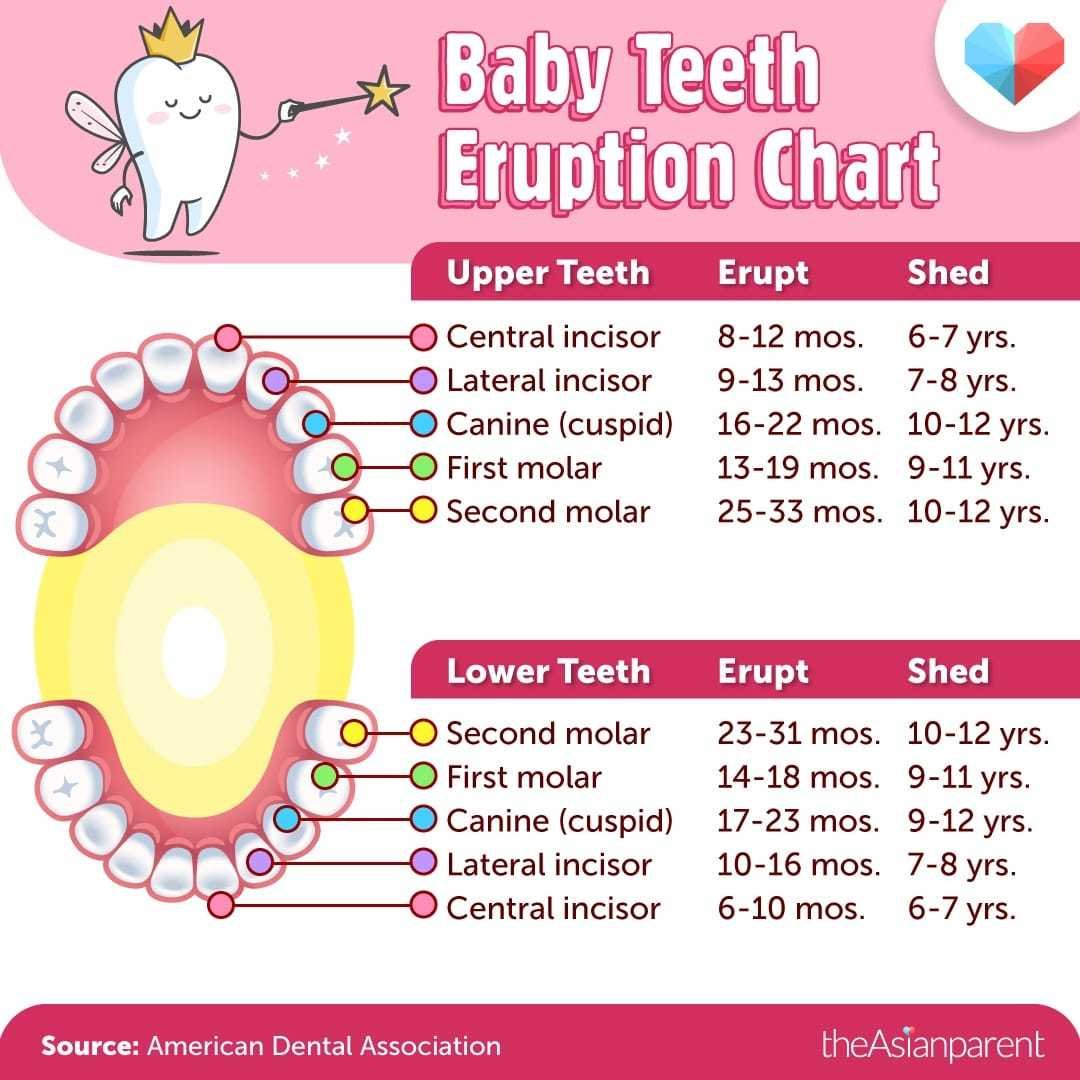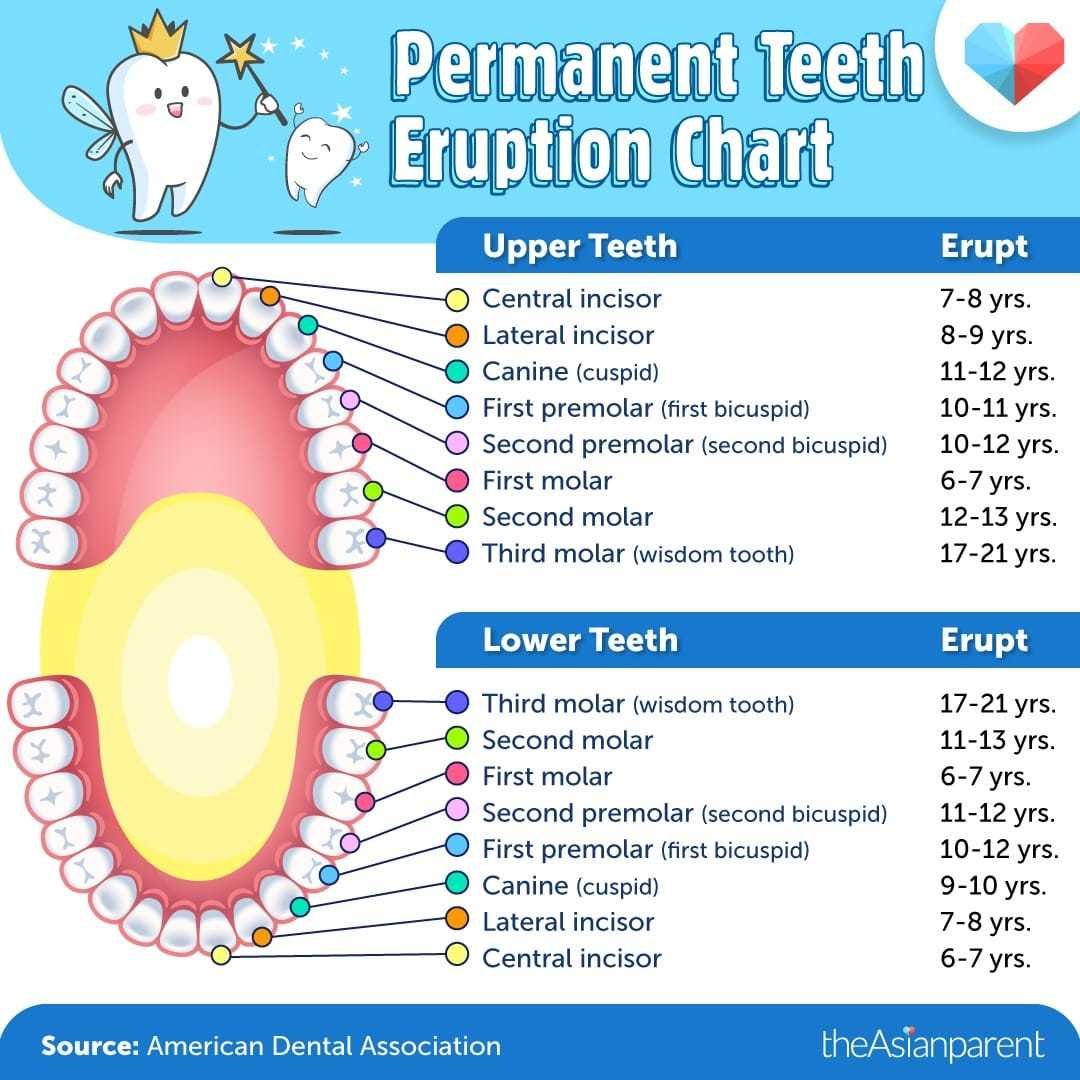
The eruption of teeth is part of your baby or child’s developmental milestones. By the time a child is 2 to 3 years of age, all 20 primary teeth (baby teeth) should have erupted. In this article, we examine the teeth eruption order for both primary and permanent teeth.
When it comes to teething, every baby is different. Some babies might start to teeth as early as 4 months, and for some, baby teeth appear as late as 1 year!
In some cases, a baby may be born with one or more teeth.
Here are some interesting facts about teeth eruption order in babies:
– Girls usually get their baby teeth earlier than boys.
– Premature and low birth weight babies can have delayed primary tooth eruption and enamel defects, putting them at higher risk for decay.
– As a rule, for every 6 months of life, approximately 4 teeth will erupt.
– Lower teeth usually erupt before upper teeth.
– Primary teeth eruption is usually symmetrical. Teeth in both jaws usually erupt in pairs — one on the right and one on the left.
– Primary teeth have thinner enamel, are smaller in size and whiter in color than the permanent teeth that will appear later.
– The spacing between children’s baby teeth is important because it allows enough room for the bigger, permanent teeth.
– By the time a child is 2 to 3 years of age, all 20 primary teeth — 10 in the upper jaw and 10 in the lower jaw, should have erupted.
– The American Academy of Pediatrics recommends contacting a dentist if your baby hasn’t experienced any tooth eruptions by 18 months of age.
Primary teeth eruption order:

There are five different types of teeth your baby will develop during the first three years. Your baby will usually get his/her teeth in this order:
1. Central incisors (front teeth)2. Lateral incisors (between the central incisors and canines)
3. First molars
4. Canines (beside the first molars)
5. Second molars
It is important to note that baby teeth eruption times can vary from child to child.
Your child's teeth can fall out in any order, but baby teeth usually fall out in the same order they arrived. Also, if your child's baby teeth came in later than his peers, he/she may lose them later, too.
Here we list out in what order baby teeth will (usually) erupt, and when they are expected to fall out:
Lower central incisor
When tooth emerges: 6 to 10 months
When tooth falls out: 6 to 7 years
Upper central incisor
When tooth emerges: 8 to 12 months
When tooth falls out: 6 to 7 years
Upper lateral incisor
When tooth emerges: 9 to 13 months
When tooth falls out: 7 to 8 years
Lower lateral incisor
When tooth emerges: 10 to 16 months
When tooth falls out: 7 to 8 years
Upper first molar
When tooth emerges: 13 to 19 months
When tooth falls out: 9 to 11 years
Lower first molar
When tooth emerges: 14 to 18 month
When tooth falls out: 9 to 11 years
Upper canine or cuspid
When tooth emerges: 16 to 22 months
When tooth falls out: 10 to 12 years
Lower canine or cuspid
When tooth emerges: 17 to 23 months
When tooth falls out: 9 to 12 years
Lower second molar
When tooth emerges: 23 to 31 months
When tooth falls out: 10 to 12 years
Upper second molar
When tooth emerges: 25 to 33 months
When tooth falls out: 10 to 12 years

Why taking care of baby teeth is important:
We tend to get lazy when it comes to taking care of our little ones’ baby or primary teeth because we know they will fall out to make way for the permanent teeth.
But baby teeth play several vital roles:
– They reserve space for their permanent counterparts
– They give the face its normal appearance
– They aid in the development of clear speech
– They help attain good nutrition (missing or decayed teeth make it difficult to chew, causing children to avoid or reject foods)
– They help give a healthy start to the permanent teeth. Decay and infection in baby teeth can cause dark spots on the permanent teeth developing beneath them.
Tips for taking care of baby teeth:

– Even before tooth eruption, parents can begin wiping the gums of a baby with a soft washcloth or soft toothbrush to establish a daily oral hygiene routine.
– For breastfed babies, stop night feedings once teeth erupt.
– Fruit juices, soft drinks, sweet teas, formula, and milk should not be put in an infant’s bottle or sippy cup during bedtime or nap time. At these times, bottles or sippy cups should only contain water.
– Introduce a cup as soon as the infant can sit unsupported (around 6 months of age) and try to eliminate the bottle by 1 year of age.
– Clean or brush a young child’s teeth twice daily. Toothbrushes for infants and toddlers should be soft, with a small head and a large handle.
– According to the AAP, toothbrushing should be supervised until the child can reliably rinse and spit out excess toothpaste (usually until 6 years of age). Younger children do not have the hand coordination necessary for independent toothbrushing before that age.
– Parents should not allow their children to swallow fluoridated toothpaste.
Permanent teeth eruption order:
Eruption of the permanent teeth begins between 5 and 7 years and usually finishes by 13 to 14 years of age. Your child will probably have all 28 permanent adult teeth at around age 13. The four wisdom teeth will usually come in when he/she's 17 to 21 years old.
The typical pattern for permanent teeth eruption is central incisors, lateral incisors, first molars, premolars, canines, second molars, and third molars (wisdom teeth), although not everyone develops or erupts third molars.
Upper permanent teeth development timeline:

Central incisor
When tooth emerges: 7 to 8 years
Lateral incisor
When tooth emerges: 8 to 9 years
Canine (cuspid)
When tooth emerges: 11 to 12 years
First premolar (first bicuspid)
When tooth emerges: 10 to 11 years
Second premolar (second bicuspid)
When tooth emerges: 10 to 12 years
First molar
When tooth emerges: 6 to 7 years
Second molar
When tooth emerges: 12 to 13 years
Third molar (wisdom teeth)
When tooth emerges: 17 to 21 years
Lower permanent teeth development timeline:

Third molar (wisdom tooth)
When tooth emerges: 17 to 21 years
Second molar
When tooth emerges: 11 to 13 years
First molar
When tooth emerges: 6 to 7 years
Second premolar (second bicuspid)
When tooth emerges: 11 to 12 years
First premolar (first bicuspid)
When tooth emerges: 10 to 12 years
Canine (cuspid)
When tooth emerges: 9 to 10 years
Lateral incisor
When tooth emerges: 7 to 8 years
Central incisor
When tooth emerges: 6 to 7 years
(Source: Cleveland Clinic, American Dental Association)
This article was republished with permission from theAsianParent.
theAsianparent is a publication under Tickled Media Pte Ltd. Started in September 2009, it is the largest parenting website in Southeast Asia, targeted at urban parents and parents-to-be who live in Asia or are of Asian heritage. theAsianparent speaks to every stage and priority of an Asian mom’s journey – from pre-conception to pregnancy, to breastfeeding, and even how to raise smart, strong and kind children.




